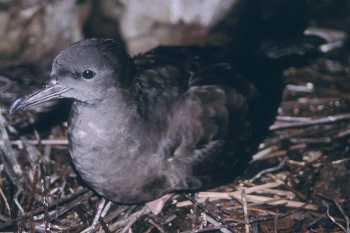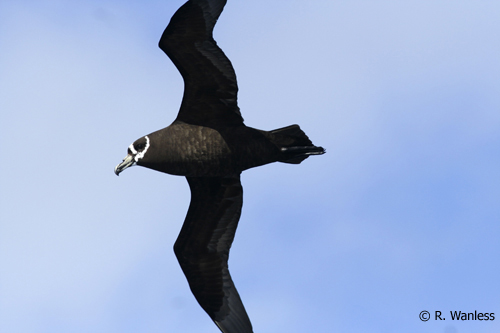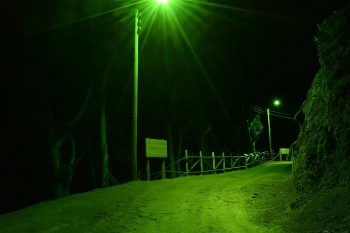Hola Mexico! Satellite-tracked Pink-footed Shearwaters migrate from Chile to the Northern Hemisphere
The Vulnerable Pink-footed Shearwater Puffinus creatopus is a recently listed ACAP species. A breeding endemic to Chile it migrates to the northern hemisphere – as far as Canadian waters - after breeding. Over recent years the species’ trans-equatorial migration routes have been studied (click here and here).
This year in April 10 breeding Pink-footed Shearwaters were fitted with solar-powered satellite trackers on Chile’s Isla Mocha. Four of the birds are currently off the coast of Peru, and six have already crossed the Equator into Mexican waters on their way north, as of 22 June.
One of the 10 shearwaters has shown a previously undescribed behaviour in its migration, entering into offshore pelagic waters off the coast of Mexico.
Follow the shearwaters' daily progress here.
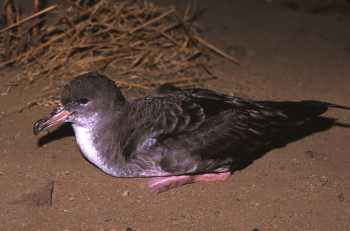
Pink-footed Shearwater, photograph by Peter Hodum
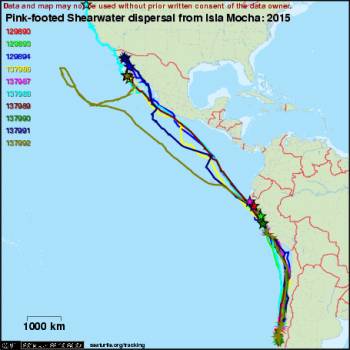
Tracking map for 22 June courtesy of Oikonos Ecosystem Knowledge
The tracking study is a project of the U.S. Geological Survey and Oikonos Ecosystem Knowledge.
John Cooper, ACAP Information Officer, 23 June 2015

 English
English  Français
Français  Español
Español 